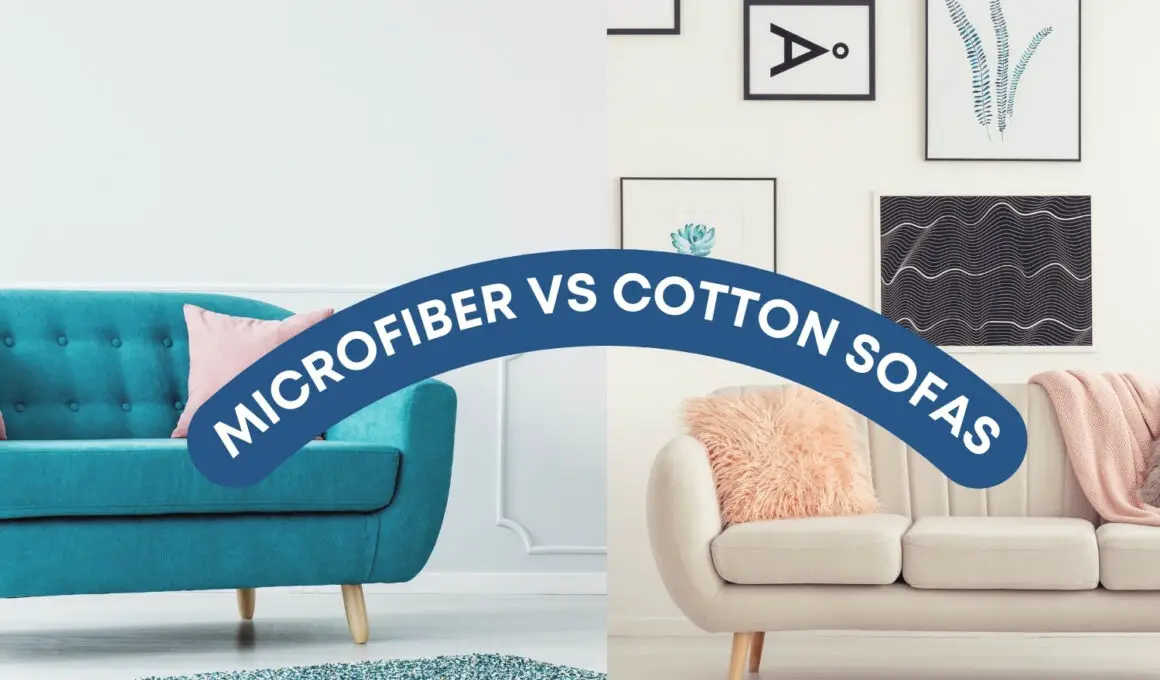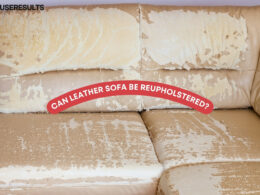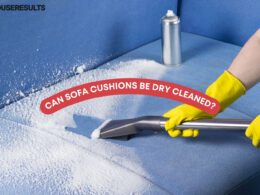Table of Contents Show
Deciding on the perfect sofa isn’t just about choosing a piece that fits your home’s aesthetic. As both an experienced homeowner and a contractor, I’ve seen firsthand the importance of materials in the longevity, comfort, and maintenance of this critical piece of furniture.
When it comes down to popular choices, two contenders stand out: microfiber and cotton sofas. Each brings its own set of advantages to the table, and understanding these can significantly impact your living space’s comfort and functionality.
In this comprehensive comparison between microfiber and cotton sofas, we’re going to explore several criteria that most homeowners grapple with during the selection process.
From assessing the durability to breaking down the maintenance, comfort level, cost-effectiveness, and even the environmental impact, this article aims to equip you with everything you need to know to make an informed decision.
For anyone standing in a furniture store, confused and asking, “Which material is the better choice for my home?”, this article serves as a practical guide.
Let’s walk through these aspects together, simplifying the complexities involved, so that choosing between a microfiber and a cotton sofa becomes less of a guesswork and more of a well-informed decision-making process. Whether you prioritize easy cleaning, comfort, cost, or durability, we’ve got you covered with this head-to-head comparison.
Quick Answer
The main difference between microfiber and cotton sofas emerges in their individual characteristics and homeowner needs. Microfiber, known for its durability and ease of maintenance, is a go-to for households that need stain-resistant furniture. It stands up well to wear and tear, often looking good as new with minimal effort, which is particularly appealing to busy households. On the other hand, cotton offers a classic, comfortable feel, breathing more naturally, but requires more attentive care. Its susceptibility to wear and stains means more frequent cleaning, though it’s a preferred eco-friendly option because of its natural fibers.
1. Durability Comparison
When it comes to investing in a new sofa, understanding the durability of the material you’re choosing is crucial. No one wants to find themselves dealing with frayed fabrics or faded colors just a few months down the line. One factor that profoundly impacts the longevity of a sofa is the fabric’s resistance to daily wear and tear, stains, and spills.
Microfiber Durability
Microfiber, with its reputation for resilience, has become increasingly popular among homeowners. According to a study published in the Journal of Textile Engineering & Fashion Technology, microfiber fabrics are renowned for their longevity and ability to withstand physical stress, owing largely to their unique structural composition of tightly woven synthetic fibers.
This dense construction not only provides superior resistance to wear and tear but also repels spills before they have the chance to become set-in stains, a particularly favorable feature for households with children or pets.
Furthermore, microfiber’s ability to maintain its color brilliance is commendable, ensuring the sofa continues to look inviting and new for years to come.
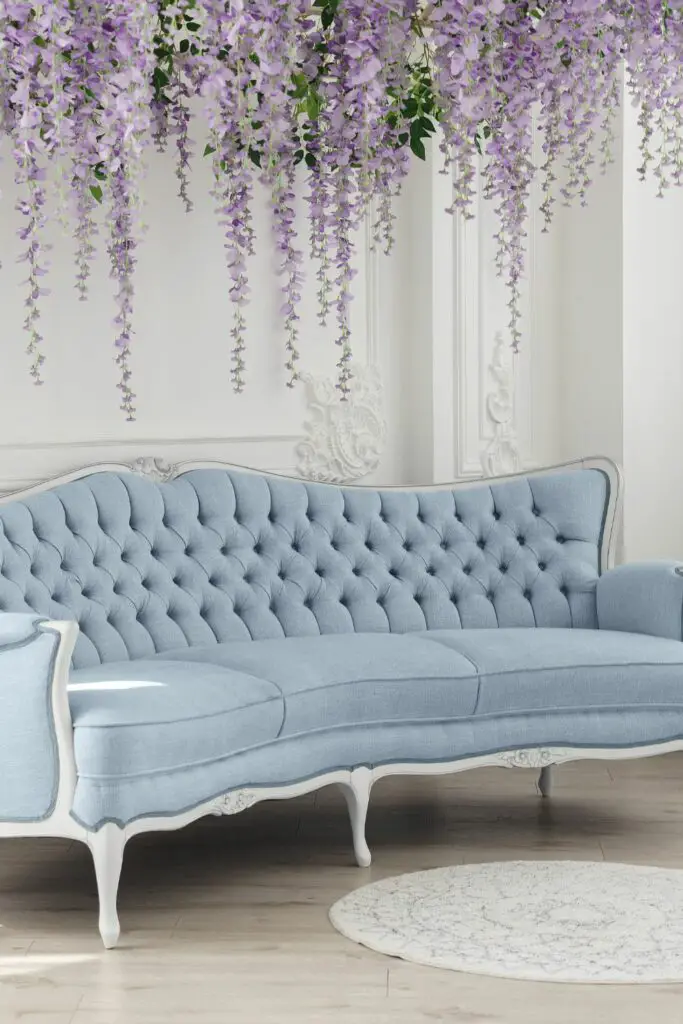
Cotton Durability
Cotton, on the other hand, presents a different set of attributes. While appreciated for its natural and comfortable feel, its resilience can be a concern. Cotton sofas are susceptible to wear and tear, especially in a home with high furniture usage.
According to Consumer Reports, cotton fabric can show wear earlier than others, particularly in areas of repeated use, such as seating surfaces. It tends to absorb spills quickly, making stains more challenging to deal with, and its colors may fade with time, especially when exposed frequently to sunlight.
However, heavy-duty cotton or blends could potentially offer more durability, slightly offsetting some of these concerns.
2. Comfort and Feel
Selecting the right sofa material isn’t just a practical decision; it’s incredibly personal, hinging on the tactile experience that each fabric offers. The comfort and feel of the sofa’s fabric can profoundly impact your relaxation at home. In this section, we’ll compare the sensory aspects of microfiber and cotton, helping you understand what you can expect from each material in terms of comfort.
Comfort Level of Microfiber
Microfiber, owing to its fine, synthetic yarns, boasts a texture that’s distinctly smooth to the touch. The fibers are crafted to simulate a range of textures, from suede-like softness to the sleekness of silk, which is a testament to its versatility. The comfort level, however, can depend significantly on the weave and finish employed.
A tighter weave results in a firmer feel, often preferred for its semblance to luxury and its subtle sheen. In contrast, a looser weave might offer a plush coziness perfect for lounging. The finishing processes also contribute to microfiber’s hypoallergenic nature, making it an excellent choice for those sensitive to allergens commonly harbored in upholstery.
Comfort Level of Cotton
Comfort speaking, cotton stands out with its natural, breathable properties, often associated with a gentle and welcoming touch. Unlike the uniformity of synthetic fibers, cotton’s natural fibers can lend a more organic texture, providing a sense of warmth that many homeowners cherish.
However, the comfort factor of cotton sofas can be quite diverse, depending on the weave and the blend of the fabric. For instance, a denser weave-like canvas is sturdy and reliable, whereas a cotton-silk blend could elevate the feel, bringing a luxurious softness ideal for relaxation. Moreover, pure cotton is known for its breathability, an aspect that keeps the material cool and inviting, a boon during warmer weather.
3. Maintenance and Care
One of the realities of owning a sofa is the inevitable need for maintenance and care. Whether you’re dealing with accidental spills, accumulated dust, or the occasional mystery stain, understanding how to care for your sofa’s fabric is crucial.
It’s not just about preserving appearances; it’s also about extending the life of your investment. In this section, we’ll examine what it takes to maintain both microfiber and cotton sofas, providing you with practical guidance for everyday furniture care.
Maintaining a Microfiber Sofa
Microfiber sofas have gained popularity, partly due to their relatively hassle-free maintenance. The fabric’s unique structure creates a sort of repellency to liquids, giving you those extra few moments to address spills before they seep into the cushions. For general upkeep, a quick pass with a vacuum cleaner fitted with a brush attachment is often all it takes to keep your sofa looking fresh.
When dealing with stains, however, a slightly damp cloth or a dedicated upholstery cleaner is your best bet. It’s essential to avoid over-wetting the fabric and to steer clear of harsh chemicals that could damage the fibers.
here’s a pro tip: rubbing alcohol can work wonders on stubborn stains. Just apply a bit to a clean sponge or cloth and gently dab the affected area. Once you’ve addressed the stain, fluff the fabric with a soft brush to maintain its texture.
Maintaining a Cotton Sofa
Cotton sofas, while beloved for their comfort, demand a bit more attention in the maintenance department. They’re more prone to absorbing spills, so quick action is necessary to prevent permanent staining. It’s advisable to keep the upholstery’s care instructions at hand, as different cotton blends may have specific cleaning requirements.
For routine care, vacuuming with an upholstery attachment works well for removing dust and crumbs. If you’re tackling a stain, it’s preferable to use a clean cloth and a mild, water-based detergent or upholstery shampoo, applying with gentle, circular motions and immediate blotting to lift the stain.
Some cotton sofa covers are removable and machine washable, a convenient feature for busy households. However, regular professional cleaning is recommended to maintain the fabric’s integrity and appearance, especially if the upholstery is fixed or made of a delicate cotton blend. It’s also worth considering investing in a protective spray to repel stains and water, thereby making maintenance a smoother process.
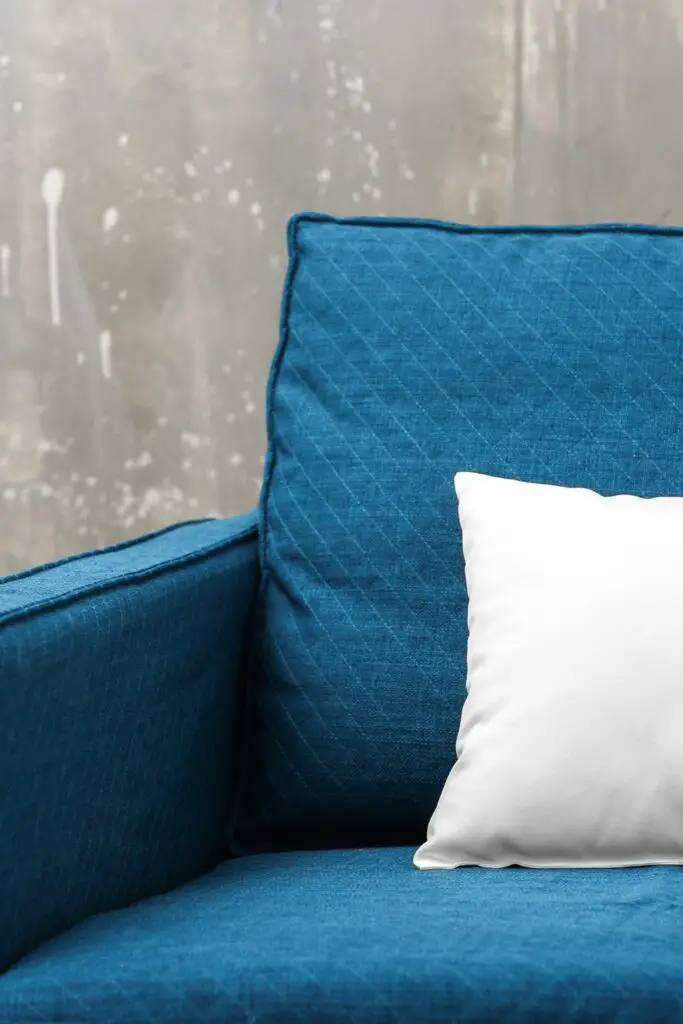
4. Cost-Effectiveness
Beyond the comfort, style, and ease of care, there’s another practical factor that many of us consider when choosing a sofa: cost-effectiveness. This isn’t just about the initial price tag; it’s also about the long-term value you get from your investment.
In this section, we’ll evaluate the pricing of both microfiber and cotton sofas, examining not only upfront costs but also how factors like durability, maintenance, and aesthetic retention contribute to the furniture’s overall value.
Pricing of Microfiber Sofas
Microfiber sofas have earned their spot in many homes for various reasons, one of which is their attractive cost-to-durability ratio. Generally, these sofas come with a moderate price tag, accessible to a wide range of budgets. The actual cost can vary based on factors like the furniture brand, style, and where you purchase it.
However, the true value of a microfiber sofa becomes evident when considering its longevity. Given the material’s resistance to stains, spills, and wear and tear, microfiber sofas often see a longer life with less requirement for costly professional cleaning or early reupholstering.
This durability, combined with the relatively low maintenance cost, contributes to the cost-effectiveness of microfiber, making it an appealing choice for those seeking long-term value.
Pricing of Cotton Sofas
Cotton sofas, in contrast, can have a wider price range, influenced by the type of cotton, the brand, and the overall quality of the construction. Pure, organic cotton and high-quality blends, for instance, typically come at a premium, given their natural sourcing and the craftsmanship involved.
In terms of long-term value, cotton sofas can be somewhat of an investment. While their classic, evergreen appeal and the sheer comfort they offer can justify the initial expense, it’s essential to factor in maintenance costs. Regular professional cleaning, potential reupholstering due to wear or fading, and the need for frequent refreshes of protective treatments can add up over time.
Moreover, the lifespan of a cotton sofa can be extensive if well-maintained, but this comes with a consistent care investment. Therefore, when considering cotton, it’s worth weighing the ongoing maintenance effort and cost against the aesthetic and comfort preferences to determine if it’s the most cost-effective choice for your lifestyle.
5. Environmental Impact
In our current age of environmental consciousness, considering the ecological footprint of our purchases, including furniture, has become increasingly paramount. This awareness extends to the choice between microfiber and cotton sofas, each with distinct environmental implications.
This section aims to illuminate these aspects, offering insights into how each fabric fares in terms of sustainability, and the impact they have from production to disposal.
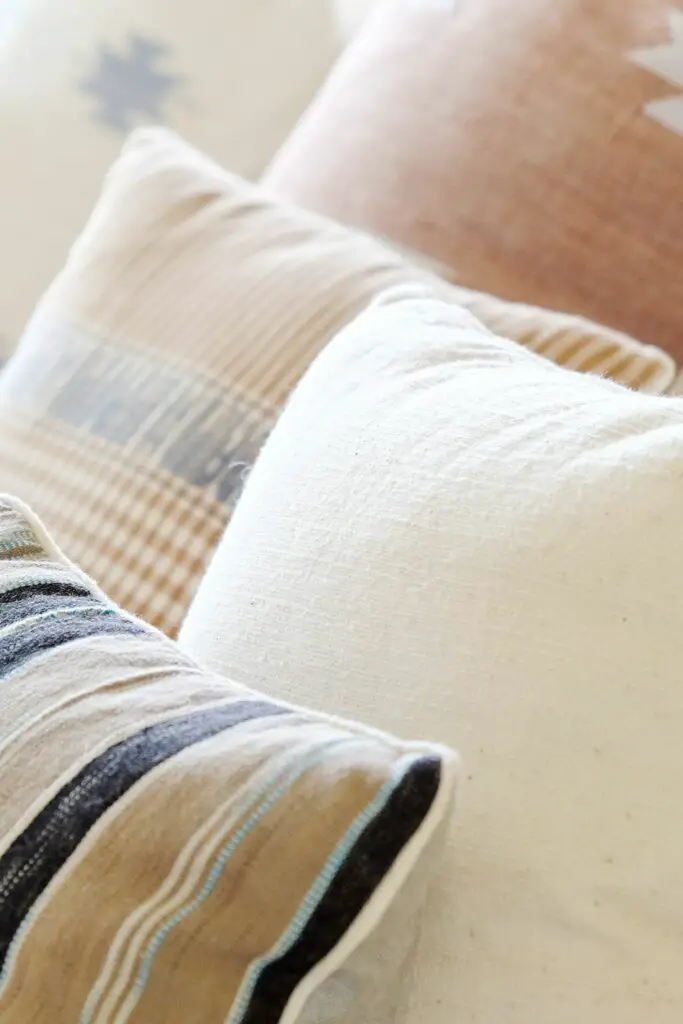
Microfiber’s Environmental Footprint
Microfiber, for all its practical benefits, poses several environmental concerns. The production process involves the use of petrochemicals, which significantly contribute to pollution and resource depletion. Furthermore, the process is energy-intensive, heightening its carbon footprint.
An additional environmental challenge is the issue of microplastics. When microfiber fabrics are washed, they can release tiny plastic fibers into the water, which eventually make their way into aquatic ecosystems, posing a threat to marine life. While microfiber sofas don’t require as much washing as clothing, the concern remains for their end-of-life phase.
Regarding disposal, the synthetic nature of microfiber means it is not biodegradable. Though recycling options are available, they are limited and depend on local facilities, leading most discarded microfiber products to occupy landfill space for many years.
Cotton’s Environmental Footprint
Conversely, cotton, a natural fiber, has a different set of environmental considerations. Traditional cotton farming is notoriously resource-intensive, requiring substantial water usage and often relying on pesticides and herbicides.
These chemicals can be harmful to the environment, contaminating water sources, disrupting ecosystems, and posing health risks to workers.
However, the rise of organic cotton farming offers a more sustainable alternative. By eschewing synthetic chemicals and using less water, organic cotton farming is more environmentally friendly.
Additionally, cotton is biodegradable, which means that products made from natural cotton can decompose, reducing landfill waste.
Sofas made from organic cotton might come with a higher price tag, but for eco-conscious consumers, the environmental benefits — reduced chemical use, lower water consumption, and support for sustainable farming practices — could outweigh the cost.






